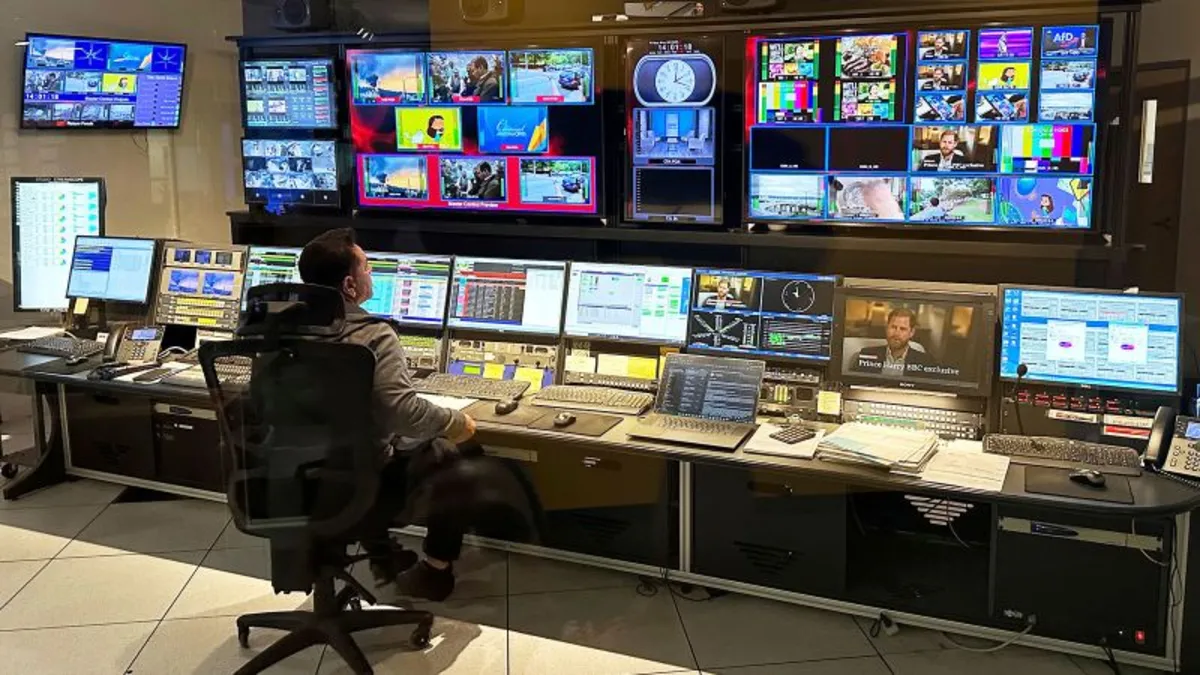
PBS and NPR stations are currently facing the threat of losing federal funding that has been crucial for their operations for decades. The U.S. Senate is poised to vote on a rare legislative measure known as a “rescission,” which seeks to retract approximately $1.1 billion in funding for public media that was already allocated by Congress. This impending decision raises significant questions about the future of public broadcasting in America and what viewers and listeners can expect if funding is eliminated.
If lawmakers proceed with the cuts, the repercussions for PBS and NPR audiences could be profound. Over time, numerous local stations may find themselves unable to continue broadcasting, while others might reduce the variety of shows they air. The resources available for news reporting and educational programming could also diminish significantly. However, the exact effects of these funding cuts are difficult to forecast, given the complexity of the public radio and television system.
At the heart of this system is the Corporation for Public Broadcasting (CPB), an independent organization created by Congress in the 1960s. The CPB receives $535 million in taxpayer support annually, redistributing these funds to approximately 1,500 local radio and television stations across the United States, as well as supporting programmers and infrastructure providers. The funding that is now under threat is a critical lifeline for these stations, particularly as the Trump administration and congressional Republicans push to revoke it, while Democrats advocate for its preservation.
The proposed rescission by President Trump targets CPB’s federal funding for the fiscal years spanning from October 2025 to September 2027. If the funding is successfully clawed back, public media stations will start experiencing budget shortfalls as early as this fall. Many public media executives are already bracing for potential layoffs and other cost-cutting measures as they prepare for the financial impact of these cuts.
While PBS and NPR affiliates do have other revenue streams—including donations from “viewers like you”—federal funding historically serves as the foundation for their financial stability. According to CPB, “For every public dollar provided, stations raise nearly seven dollars from donors, including state and local governments, universities, businesses, foundations, and individual viewers and listeners.” This dependency illustrates the crucial role that federal funding plays in sustaining public media.
Many may wonder if the affected stations can simply raise more money from listeners to compensate for the loss of federal funds. The answer is complicated. Larger stations in metropolitan areas may find it easier to fill the gaps with fundraising campaigns, while smaller stations, particularly those in rural or hard-to-reach areas, often rely more heavily on federal funding. In some instances, these taxpayer dollars directly support operations, ensuring that broadcast antennas remain functional and that the stations can continue to serve their communities.
What does this mean for beloved shows like “Daniel Tiger’s Neighborhood”? While such programs are unlikely to disappear entirely, reduced funding generally means that stations will have less money to invest in programming. This could adversely affect the overall landscape of noncommercial television and radio. The acclaimed documentary filmmaker Ken Burns has emphasized the importance of PBS, stating, “I couldn’t do any of the films I’ve done without them being on PBS.”
Within the public media framework, funding flows from CPB to local stations, which then contribute back to national entities like NPR and PBS through dues and fees. This financial model is vital for sustaining popular national programs such as “Morning Edition” and “All Things Considered.” NPR has pointed out that while federal funding only constitutes 1% of its revenue, member station fees account for a significant 30% share. Consequently, national operations are preparing for a domino effect that could emerge from the funding cuts.
The push to eliminate public media funding stems from a long-standing political struggle. Conservative activists have consistently argued against taxpayer support for media, deeming it unnecessary and financially imprudent. The libertarian Cato Institute has been advocating for the defunding of CPB since the 1970s, asserting that “nowhere in the Constitution does it say Congress should fund a national media.” Additionally, critics argue that the public broadcasting model is outdated in the age of streaming services. However, for Trump and some supporters, the primary concern is perceived bias within NPR and PBS, which they argue perpetuates a narrative favorable to Democrats. Conversely, some moderate Republicans acknowledge the value of public media, with Senator Susan Collins labeling the cuts to CPB as “excessive” while still advocating for NPR defunding due to alleged bias.
Democrats in Congress, while lacking the votes to halt the rescission package, are vocal about their support for public media. Senator Maria Cantwell has described the potential elimination of PBS and NPR funding as a “reckless endangerment of 13 million Americans who depend on these stations for lifesaving emergency information.” Senator Bernie Sanders has also criticized the moves, asserting that Trump’s motivations align with authoritarian tendencies—namely, a desire to suppress criticism and objective reporting.
In summary, the potential loss of federal funding for PBS and NPR poses a significant risk to the landscape of public broadcasting in America. The outcomes of these funding cuts will not only affect local stations but also have far-reaching implications for programming, journalism, and the communities that rely on these essential services.